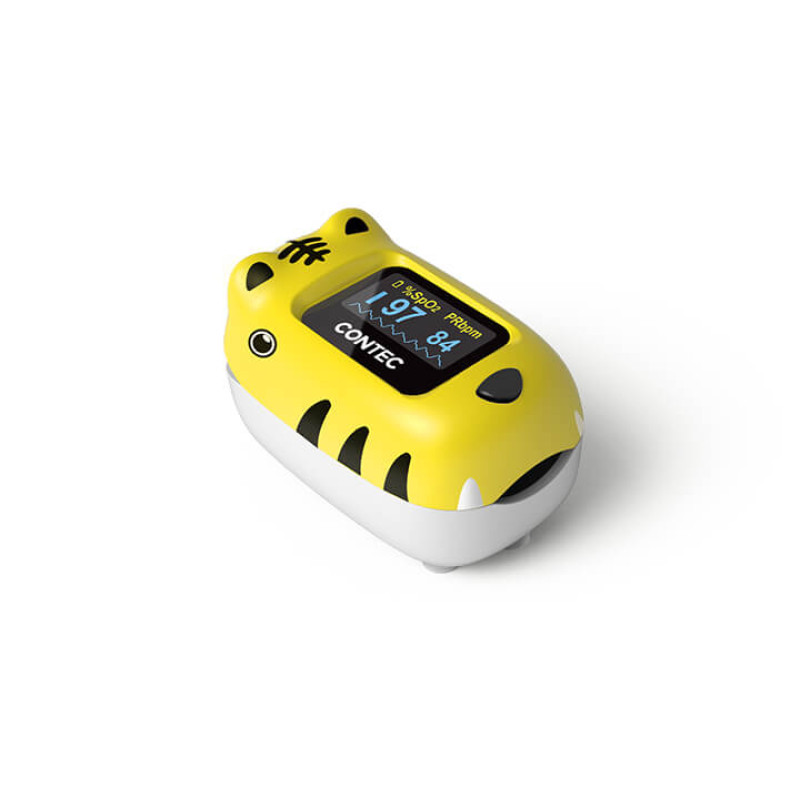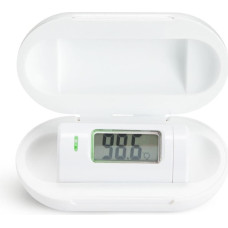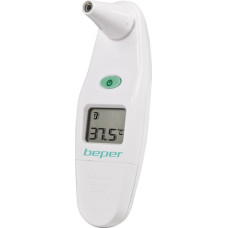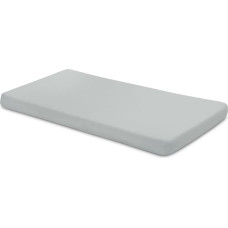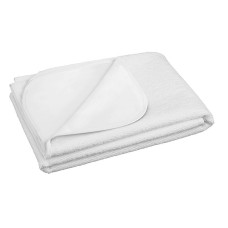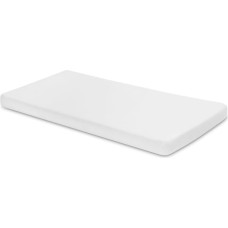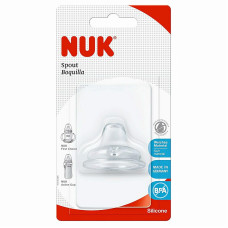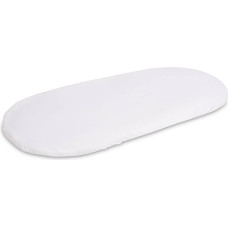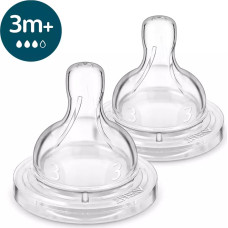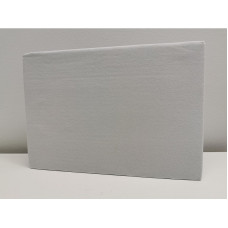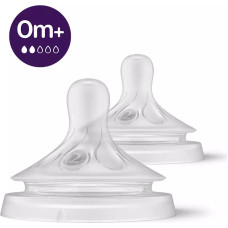The pulse oximeter operates using photoelectric oximetry technology.
It measures the oxygen saturation in the blood, specifically the hemoglobin's oxygen saturation (SpO2). This indicator is critical for evaluating the respiratory system's performance, as many respiratory illnesses cause a reduction in blood oxygen levels.
How the pulse oximeter works:
The device analyzes the color spectrum of blood and displays hemoglobin's oxygen saturation as a percentage. When oxygen binds to hemoglobin, its structure and color change: from oxygen-deprived bluish blood passing through the lungs to bright red blood as hemoglobin becomes oxygenated.
Technology used:
Pulse oximeters combine pulse detection and recording technology. The device measures:
- Oxygen concentration in the blood (SpO2)
- Pulse rate via fingertip measurements.
Suitable for:
- Home use, hospitals, and healthcare centers
- Before, after, and during physical activity or sports.
Key features:
- Suitable for children
- Equipped with a SpO2 sensor and an LCD display
- Compact, lightweight, and portable
- Simple to use, with low power consumption
- Displays SpO2 values in percentage
- Graphical representation of pulse rate
- Low voltage indicator
- Automatic shutdown: the device turns off 5 seconds after removing the finger
Technical specifications:
- Display: LCD
- SpO2 measurement range: 0%–100% (resolution 1%)
- Accuracy: 70%–100% ±2%; below 70%, accuracy is undefined
- Pulse rate range: 30–250 beats per minute (resolution 1 bpm)
- Accuracy: ±2 bpm for 30–99 bpm
- ±2 bpm for 100–250 bpm
Accuracy at low peripheral blood circulation:
- SpO2 and pulse can be measured when the pulse amplitude is 0.4%
- SpO2 error: ±4%
Resistance to ambient light:
- Deviation when measured under artificial, natural light, or darkness: < ±1%
Power consumption: < 70 mA
- Voltage: DC 3.6V–4.2V
- Power source: 2 × AAA batteries
- Battery life: up to 10 hours
Contents:
- Pulse oximeter
- Lanyard
- Screwdriver for battery cover
- User manual
- Batteries not included
Warranty: 2 years
 Baby care kits
Baby care kits Baby combs
Baby combs Baby toilet seats
Baby toilet seats Baby towels
Baby towels Bath inserts and seats
Bath inserts and seats Bath stands
Bath stands Bath thermometers
Bath thermometers Bath toys
Bath toys Bathroom toy holders (organizers)
Bathroom toy holders (organizers) Changing surfaces
Changing surfaces Children`s bathrobes
Children`s bathrobes Ear buds
Ear buds High chair
High chair Nasal aspirators
Nasal aspirators Non-slip bath mats
Non-slip bath mats Potties
Potties Shampoo protection
Shampoo protection Sheets for changing surface
Sheets for changing surface Sponges
Sponges Baby`s bathtubs
Baby`s bathtubs Baby changing table
Baby changing table Baby linen
Baby linen Baby scales
Baby scales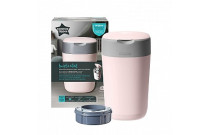 Diaper accessories
Diaper accessories Diapers
Diapers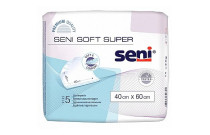 Disposable diapers
Disposable diapers Napkins
Napkins Reusable nappies
Reusable nappies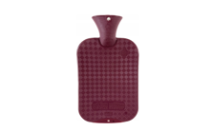 Thermophores, Heaters
Thermophores, Heaters Accessories for baby carriers and slings
Accessories for baby carriers and slings Shoulder-cloths
Shoulder-cloths Baby carriers
Baby carriers Babygro
Babygro Babygrow with long sleeves
Babygrow with long sleeves Babygrow with short sleeves
Babygrow with short sleeves Children's clothing
Children's clothing Children`s jackets
Children`s jackets Children`s swimming trunks and swimwear
Children`s swimming trunks and swimwear Children`s tights
Children`s tights Children`s tracksuits
Children`s tracksuits Children`s underwear
Children`s underwear Dresses, sundresses, skirts for girls
Dresses, sundresses, skirts for girls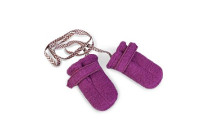 Gloves, mittens
Gloves, mittens Handkerchiefs, scarves
Handkerchiefs, scarves Hats
Hats Hats for children
Hats for children Kits for newborns
Kits for newborns Mittens for newborns
Mittens for newborns Pajamas
Pajamas Pants
Pants Slippers, shoes for children
Slippers, shoes for children Socks for children
Socks for children Suites (creepers with blouse)
Suites (creepers with blouse) Suites (pants with blouse)
Suites (pants with blouse) Suites (shorts with a shirt)
Suites (shorts with a shirt) Summer onesies
Summer onesies Bathroom accessories
Bathroom accessories Children`s Plasters
Children`s Plasters Cosmetics for girls
Cosmetics for girls Electric toothbrushes, accessories
Electric toothbrushes, accessories Face care
Face care Hair styling and straightening appliances
Hair styling and straightening appliances Irrigators
Irrigators Manicure and pedicure accessories
Manicure and pedicure accessories Massage accesories
Massage accesories Products for baby hygiene
Products for baby hygiene Shavers, trimmers for men
Shavers, trimmers for men Skin care products
Skin care products Sunscreen cosmetics
Sunscreen cosmetics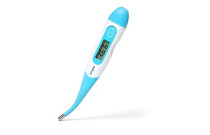 Thermometers
Thermometers Toothpastes and brushes for children
Toothpastes and brushes for children Trimmers, epilators for women
Trimmers, epilators for women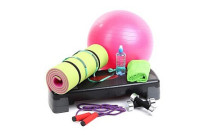 Sports and fitness
Sports and fitness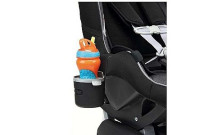 Accessories for car seats
Accessories for car seats Adapters
Adapters Base for car seats
Base for car seats Car seat inserts and covers
Car seat inserts and covers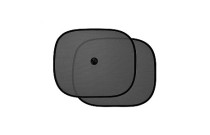 Car sunshade
Car sunshade Head cushion
Head cushion Protective mats for car seats, car mirrors
Protective mats for car seats, car mirrors Car seats (booster) 15-36kg
Car seats (booster) 15-36kg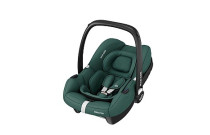 Auto carry 0-13kg
Auto carry 0-13kg Car seats 0-18kg
Car seats 0-18kg Car seats 15-36kg
Car seats 15-36kg Car seats 9-18kg
Car seats 9-18kg Car seats 9-36kg
Car seats 9-36kg Car seats 0-25kg
Car seats 0-25kg Car seats 0-36kg
Car seats 0-36kg Accessories for children's vehicles
Accessories for children's vehicles Bicycles without pedals/runbikes
Bicycles without pedals/runbikes Push stand-up scooters
Push stand-up scooters Rollers
Rollers Skateboards
Skateboards Skis
Skis SUP boards
SUP boards Three-wheelers
Three-wheelers Push cars
Push cars Babywalker
Babywalker Sledge
Sledge Children`s pedal cars
Children`s pedal cars Electromobiles
Electromobiles Two-wheelers
Two-wheelers Baby protection accessories
Baby protection accessories Children glasses for digital devices
Children glasses for digital devices Leash holder (reins) for children
Leash holder (reins) for children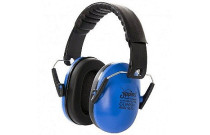 Noise-suppressing headphones for children
Noise-suppressing headphones for children Protective helmets
Protective helmets Repellents
Repellents Security systems
Security systems Babyphones and video baby monitors
Babyphones and video baby monitors Bibs, Burp cloths
Bibs, Burp cloths Bottle and teat dryers
Bottle and teat dryers Bottle washing brushes
Bottle washing brushes Children`s dishes
Children`s dishes Children`s serving pieces
Children`s serving pieces Educational cups
Educational cups Feeding bottles
Feeding bottles Formula milk
Formula milk Nibbler-strainer for feeding
Nibbler-strainer for feeding Non-slip table mats
Non-slip table mats Snack dishes
Snack dishes Soothers for bottles
Soothers for bottles Spare parts
Spare parts Thermal bags
Thermal bags Accessories for chairs
Accessories for chairs Mattresses
Mattresses Musical merry-go-rounds
Musical merry-go-rounds Projectors, Nightlights
Projectors, Nightlights Toy boxes
Toy boxes Crib accessories
Crib accessories Soft chairs
Soft chairs Cots and cribs for travel
Cots and cribs for travel Highchairs
Highchairs Tables and chairs
Tables and chairs Cots for infants
Cots for infants Beds for teens
Beds for teens Dressers
Dressers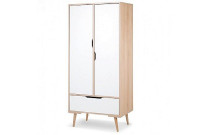 Wardrobes, shelves
Wardrobes, shelves Furniture sets
Furniture sets Balloons
Balloons Calendars
Calendars Candles for cake
Candles for cake Carnival Costumes for Children
Carnival Costumes for Children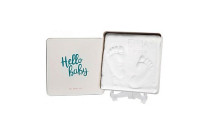 Casting kits
Casting kits Face paints
Face paints For Easter
For Easter Gift cards
Gift cards Invitation cards, postcards, bags
Invitation cards, postcards, bags Money boxes
Money boxes Pens
Pens Soap bubbles
Soap bubbles All for Christmas
All for Christmas Decorative letters
Decorative letters Breast milk storage
Breast milk storage Breast pumps
Breast pumps Breastfeeding pads
Breastfeeding pads Briefs for pregnant women and mothers
Briefs for pregnant women and mothers Foundation sleeveless undershirt
Foundation sleeveless undershirt Horseshoe feeding pillows
Horseshoe feeding pillows Hygiene products for mothers
Hygiene products for mothers Nursing bras
Nursing bras Peldkostīmi
Peldkostīmi Protective nursing pads
Protective nursing pads Support belts
Support belts Tights and Leggings for moms
Tights and Leggings for moms 2-piece bedding set
2-piece bedding set 3-piece bedding set
3-piece bedding set 4-piece bedding set
4-piece bedding set 5-piece bedding set
5-piece bedding set 6-piece bedding set
6-piece bedding set Baby sheets
Baby sheets Bed linen for the cradle
Bed linen for the cradle Blankets
Blankets Blankets, pillows, pillowcases, covers
Blankets, pillows, pillowcases, covers Canopies for baby cribs
Canopies for baby cribs Cocoons (nests) for newborns
Cocoons (nests) for newborns Envelopes and sleeping bags for newborns
Envelopes and sleeping bags for newborns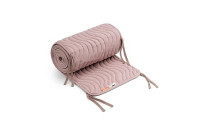 Ledges in the crib
Ledges in the crib Organizers for baby cribs
Organizers for baby cribs Auto products
Auto products Batteries
Batteries Blenders, choppers, juicers
Blenders, choppers, juicers Boxes, hangers and garment bags
Boxes, hangers and garment bags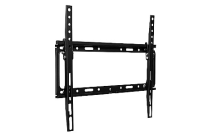 Brackets and mountings, wires
Brackets and mountings, wires Building tools
Building tools Coffee machines, accessories
Coffee machines, accessories Cutting boards, kitchen scales
Cutting boards, kitchen scales Dishes, cutlery
Dishes, cutlery Electric grills, Toster, Waffle
Electric grills, Toster, Waffle Food storage utensils
Food storage utensils Fryers
Fryers Game consoles, games
Game consoles, games Garden goods
Garden goods Heaters, sterilizers
Heaters, sterilizers Home climate control appliance
Home climate control appliance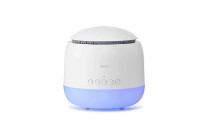 Humidifiers, aromatizers
Humidifiers, aromatizers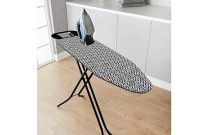 Irons, ironing boards
Irons, ironing boards Mixers, foaming units
Mixers, foaming units Mobile phones and accessories
Mobile phones and accessories Multicookers, pressure cookers
Multicookers, pressure cookers Sewing machines, accessories
Sewing machines, accessories Spatulas, Shredders, Choppers, etc
Spatulas, Shredders, Choppers, etc Special cooking appliances
Special cooking appliances Teapots
Teapots Trash bins, bags
Trash bins, bags TV, PC, Audio, Photo and video equipment
TV, PC, Audio, Photo and video equipment Vacuum cleaners
Vacuum cleaners Zoo products
Zoo products Cleaning products
Cleaning products Water filters, carbonating equipment
Water filters, carbonating equipment Chaise longues accessories
Chaise longues accessories Baby seesaw
Baby seesaw Longues
Longues Rocking horses
Rocking horses Children`s bags, backpacks
Children`s bags, backpacks Children`s suitcases Trunki
Children`s suitcases Trunki Children`s sunglasses
Children`s sunglasses Children`s tattoos
Children`s tattoos Craft sets
Craft sets Drawing kits
Drawing kits Globuss
Globuss Jewellery, watches, keychains
Jewellery, watches, keychains Magnetic and Drawing boards
Magnetic and Drawing boards Office equipment
Office equipment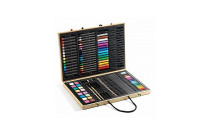 Pencils, crayons, markers
Pencils, crayons, markers Plasticine, modeling masses, kinetic sand, slimes
Plasticine, modeling masses, kinetic sand, slimes Scratchpad
Scratchpad Sets for the children`s jewelry making
Sets for the children`s jewelry making Stickers for kids
Stickers for kids Umbrellas for children
Umbrellas for children Additional accessories for baby carriages
Additional accessories for baby carriages Baby nests and sleeping bags
Baby nests and sleeping bags Bags for mothers
Bags for mothers Gloves for strollers and baby carriages (sleeves)
Gloves for strollers and baby carriages (sleeves) Inserts and foot covers
Inserts and foot covers Mosquito nets for baby carriages
Mosquito nets for baby carriages Raincoats for baby carriages
Raincoats for baby carriages Umbrellas for baby carriages and strollers
Umbrellas for baby carriages and strollers Cradles/seats
Cradles/seats Flight baby bassinets
Flight baby bassinets Strollers
Strollers Strollers for triplets 2in1
Strollers for triplets 2in1 Strollers for triplets 3in1
Strollers for triplets 3in1 Strollers transformers
Strollers transformers Strollers for twins
Strollers for twins Baby carriages 2in1
Baby carriages 2in1 Baby carriages 3in1
Baby carriages 3in1 Baby carriages for twins 2in1
Baby carriages for twins 2in1 Boxes for dummies
Boxes for dummies Dummy accessories
Dummy accessories Pacifiers
Pacifiers Teething toys
Teething toys Accessories for swimming
Accessories for swimming Balls
Balls Beach toys
Beach toys Board games
Board games Children's tents and houses
Children's tents and houses Doll beds, baths, houses, etc.
Doll beds, baths, houses, etc. Dolls
Dolls Educational toys
Educational toys Hanging toys
Hanging toys Interactive toys
Interactive toys Jumping balls
Jumping balls Magic tricks
Magic tricks Mosaic for children
Mosaic for children Music boxes
Music boxes Musical instruments
Musical instruments Mystery Toys
Mystery Toys Playsets and toy figures
Playsets and toy figures Plush toys
Plush toys Pools with balls
Pools with balls Push car toys
Push car toys Puzzle 3D
Puzzle 3D Puzzles classic
Puzzles classic Puzzles for baby
Puzzles for baby Puzzles wooden
Puzzles wooden Pyramids for children
Pyramids for children Radio control toys
Radio control toys Rattle boxes
Rattle boxes Rokas lelles
Rokas lelles Sport games
Sport games Tinker toys
Tinker toys Toy rudders
Toy rudders Toy vehicles, tracks
Toy vehicles, tracks Toy weapon
Toy weapon Tummy-time mats
Tummy-time mats Wooden educational toys
Wooden educational toys Role playing sets
Role playing sets Water guns
Water guns Carriage for dolls
Carriage for dolls Children's slides and sandboxes
Children's slides and sandboxes Playgrounds
Playgrounds
